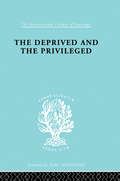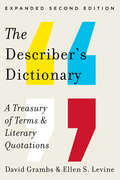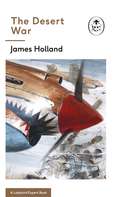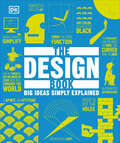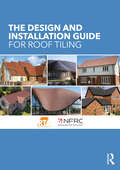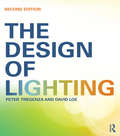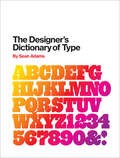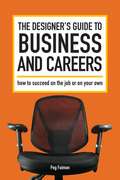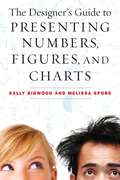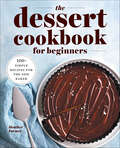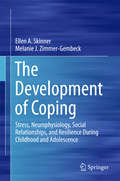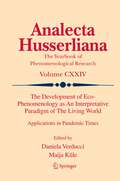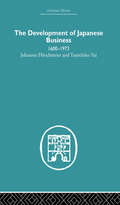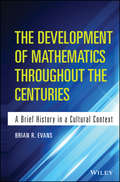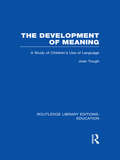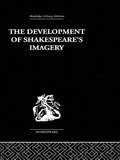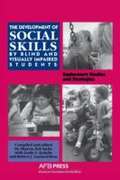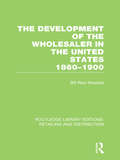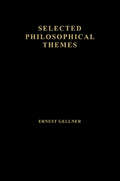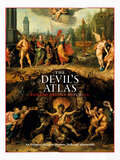- Table View
- List View
The Deprived and The Privileged: Personality Development in English Society (International Library of Sociology)
by B.M. SpinleyFirst published in 1998. Routledge is an imprint of Taylor & Francis, an informa company.
The Describer's Dictionary: A Treasury of Terms & Literary Quotations (Expanded Second Edition)
by David Grambs Ellen S. LevineThe unmatched guide--and perfect gift--for stymied scribes and working wordsmiths everywhere, now expanded and updated. A singular and indispensable reference tool, The Describer's Dictionary--now expanded and updated--has served for over twenty years as the go-to resource for writers who are determined to capture the world in just the right words. The dictionary uses a unique reverse definition-to-term format that makes it easy to zero in on the term you're seeking. Turn to the new section on sensory impressions, for example, to find vivid terms for "loud or jarring," such as "grating," "harsh," "piercing," "blaring," "thunderous," "cacophonous," and "raucous." And at the end of each section dozens of illustrative passages by notable fiction and nonfiction authors--including Donna Tartt, Michael Lewis, Zadie Smith, Khaled Hosseini, and Paul Theroux--bring the terminology to life. New in this edition: * Hundreds of additional definitions, terms, and synonyms * Brand-new categories, including "Physical States and Symptoms," "Temperament and Behavior," "Rooms and Interior Spaces," "Weather and Forces of Nature," and "The Solar System" * Over 400 new quotations from books, periodicals, and digital media by established and rising literary stars * An index of the more than 600 authors quoted in the book
The Desert War: Book 4 of the Ladybird Expert History of the Second World War (The Ladybird Expert Series #10)
by James HollandPart of the ALL-NEW LADYBIRD EXPERT SERIES.____________Why was North Africa such a key component in Britain's success over Mussolini and his Italian Army?How did they blunt Italy's actions?What challenges did they face?And what new technologies were brought to bear?When fascist dictator Mussolini declared war against Britain he was taking a huge risk . . . Italy lacked natural resources, and Britain and France's wealth.He hoped to create a new Roman Empire across the Mediterranean and into Africa. And with Hitler and the Nazi's by his side he had a great chance of doing so - but what was it that stopped him?Discover the answers and more inside James Holland's The Desert War, the thrilling and accessible account that explains what happened, who the key figures were and the tactics, triumphs and failures on both sides . . .
The Design Aglow Posing Guide for Wedding Photography
by Lena HydeRefresh your toolbox with modern poses your clients will love Whether you're shooting your first wedding or are a seasoned professional, the formal portrait session can be one of the toughest parts of photographing a wedding. Faced with tight timelines, unpredictable lighting, and clients eager for stylish, flattering portraits, it's critical to come prepared with a toolbox of fresh, modern poses. Happily, Design Aglow's 100 ideas for posing engaged couples, brides, brides and grooms, and bridal parties will help you approach each session brimming with confidence and creative ideas.Design Aglow's style-savvy approach has resonated with photographers (and their clients) everywhere. This curated collection reflects their modern sensibility, with poses from industry superstars such as KT Merry, bobbi+mike, Elizabeth Messina, Jessica Lorren, Milou + Olin, Paul Johnson, Lisa Lefkowitz, Anna Kuperberg, and more. You'll also get tips on directing your subjects, easy follow-up shots for each setup, and behind-the-scenes lighting information. Both eye candy and practical reference tool, The Design Aglow Posing Guide for Wedding Photography will inspire novices and experts alike to "wake up" their style and take beautiful portraits today's brides and grooms will love.
The Design Book (DK Big Ideas)
by DKDiscover the key ideas, innovations, and breakthroughs in the history of design.The perfect introduction to the subject, this book explores and explains the big ideas and key principles behind more than 90 of the world's most celebrated design concepts and movements, placing each in their historical, cultural, and stylistic context.The Design Book analyzes the ideas and principles behind history's most pioneering designs, exploring how creativity and innovation shape our lives. Tracing the evolution of design from its roots in early manufacturing to the cutting-edge concepts of the 21st-century, entries profile the individuals and manufacturers behind each groundbreaking development, and explore their influences and inspirations.Illustrating how and why different styles emerged and became popular, the book provides a fascinating insight into design movements, showing how each one began and describing its philosophy and visual style, from the Aesthetic Movement to Mid-Century Modern and Contemporary.Using the Big Ideas series' trademark combination of clear explanation, witty infographics, and inspirational quotes, The Design Book explains what makes a truly great design and reveals the hidden stories behind the designed world.
The Design and Installation Guide for Roof Tiling
by The Roof Association The National Roofing ContractorsThe Design and Installation Guide for Roof Tiling is the definitive guide to obtaining successful results in pitched roofing construction using clay or concrete tiles. It was written by a team of experts from the Roof Tile Association (RTA) and the National Federation of Roofing Contractors (NFRC), the representative trade associations for pitched roofing. This book is in line with British and European Standards, the latest best site practices and industry recommendations to ensure readers are receiving the most up-to-date and accurate information available in the field.Based on actual teaching practice, this book is highly illustrated throughout to increase the accessibility of the text for the reader in their exploration of the practical aspects of roofing. It also includes an extensive glossary of roofing terms for ease of reference. It brings together a comprehensive collection of the design, material specifications and workmanship requirements to construct a successful tiled pitched roof, including:• up-to-date design, product and workmanship standards• current best site practice• advances in health and safety• current typical scope of works for a roofing contractor• broad knowledge of the overall building envelope performance; specifically, the increasing insulation and airtightness requirements.Students following diploma (Foundation, Intermediate and Advanced levels) and apprenticeship routes will find this book to be an invaluable reference source of information that will accompany them throughout their studies. Building professionals concerned with the design, detailing and specification of roofing will also find this book to be an essential reference.
The Design of Lighting
by Peter Tregenza David LoeThis fully updated edition of the successful book The Design of Lighting, provides the lighting knowledge needed by the architect in practice, the interior designer and students of both disciplines. The new edition offers a clear structure, carefully selected material and linking of lighting with other subjects, in order to provide the reader with a comprehensive and specifically architectural approach to lighting. Features of this new edition include: technical knowledge of lighting in the context of architectural design; an emphasis on imagination in architectural light and presentation of the tools necessary in practice for creative design; additional chapters on the behaviour of light and on the context of design; a strong emphasis on sustainable design and energy saving, with data and examples; analyses of actual lighting schemes and references to current standards and design guides; an up-to-date review of lamp and lighting technology, with recommendations on the choice of equipment; a revision of the calculation section, with examples and step-by-step instructions, based on recent student feedback about the book.
The Designer's Dictionary of Type
by Sean AdamsA strikingly illustrated guide for graphic designers, teachers, and students of typography from the author of The Designer&’s Dictionary of Color. The Designer&’s Dictionary of Type follows in the footsteps of The Designer&’s Dictionary of Color, providing a vivid and highly accessible look at an even more important graphic design ingredient: typography. From classic fonts like Garamond and Helvetica to modern-day digital fonts like OCR-A and Keedy Sans, award-winning designer Sean Adams demystifies 48 major typefaces, describing their history, stylistic traits, and common application. Adams once again provides eye-catching illustrated examples, this time showcasing the beauty and expressiveness of typography, as employed by the world&’s greatest designers. Organized by serif, sans-serif, script, display, and digital typefaces, this book will be a vital guide for designers, teachers, or students looking to gain a foundational understanding of the art, practice, and history of typography.
The Designer's Guide To Business And Careers
by Peg FaimonInside this comprehensive guide to basic business are the tools you need to get your design career off to a strong start-and maintain it for the long haul. From researching career paths, to crafting an effective portfolio, to ensuring a consistent stream of paying projects, here you'll find everything you need to experience immediate success in your career.
The Designer's Guide to Business and Careers
by Peg FaimonFind Your Niche and Be SuccessfulInside are the tools you need to get your design career off to a strong start–and maintain it for the long haul. Peg Faimon provides a comprehensive guide to basic business issues in today's competitive marketplace. Whether you just graduated from college, are building a freelance business, or are starting your own firm, this book will give you the confidence and knowledge to create a successful and fulfilling career. You'll learn how to:Research different career paths in design and organize your job searchCraft an effective portfolio and master interview techniquesMaintain a professional image and network to ensure a consistent stream of paying projectsCollaborate effectively with clients, other designers and experts in other professions (like printers, writers, marketers and executives)Establish a freelance business, develop your in-house career or kick start your own firmStay fresh and move forward in the ever-changing world of graphic designIn addition, real-world advice from working designers and an interactive format will help you apply your new skills right away. The Designer's Guide to Business and Careers will give you everything you need to experience immediate success in your career.
The Designer's Guide to Business and Careers: How to Succeed on the Job or on Your Own
by Peg FaimonFind Your Niche and Be SuccessfulInside are the tools you need to get your design career off to a strong start–and maintain it for the long haul. Peg Faimon provides a comprehensive guide to basic business issues in today's competitive marketplace. Whether you just graduated from college, are building a freelance business, or are starting your own firm, this book will give you the confidence and knowledge to create a successful and fulfilling career. You'll learn how to:Research different career paths in design and organize your job searchCraft an effective portfolio and master interview techniquesMaintain a professional image and network to ensure a consistent stream of paying projectsCollaborate effectively with clients, other designers and experts in other professions (like printers, writers, marketers and executives)Establish a freelance business, develop your in-house career or kick start your own firmStay fresh and move forward in the ever-changing world of graphic designIn addition, real-world advice from working designers and an interactive format will help you apply your new skills right away. The Designer's Guide to Business and Careers will give you everything you need to experience immediate success in your career.
The Designer's Guide to Presenting Numbers, Figures, and Charts
by Sally Bigwood Melissa SporeNumbers can tell an exciting story. The trick is to know what story to tell and make it understandable. This compact, practical guide will show everyone who must design numeric data how to transform raw data into readable, relevant information.The Designer's Guide to Presenting Numbers, Figures, and Charts brings together the guidelines established over the last forty years for making effective presentations of figures, tables, and graphs. Included are the straightforward steps designers and other professionals can take to make their tables and charts the most meaningful. The authors define and discuss a range of graph types, from simple bar and pie charts to contemporary "data visualizations," offering explanations of the intended application of each. Readers will learn when to use a table, when to use a chart, which chart is best to use, and how to make all numeric presentations as comprehensible as possible. Specific topics include: Rounding numbersTable constructionChart designGuidance on numbers and page layout Color Reference and demonstration tablesPresenting figures in PowerPointOrdering numbers for decision-makingMultiple comparisonsGridsAnd more Communicating information effectively is an increasingly important skill in the digital age. People find numbers persuasive, and well-executed visual presentations of information will influence more people and even shorten meetings. Complete with a glossary and helpful exercises, this guide offers everything needed to create more-effective presentations.
The Designer's Web Handbook: What You Need to Know to Create for the Web
by Patrick McneilMake the Web Work for YouYou know how to design. But you can increase your value as a designer in the marketplace by learning how to make that design function on the web. From informational sites to e-commerce portals to blogs to mobile apps, The Designer's Web Handbook helps any designer understand the full life cycle of a digital product: idea, design, production and maintenance.The best web designers create not only beautiful sites but also sites that function well--for both client and end user. Patrick McNeil, creator of the popular web design blog designmeltdown.com and author of the bestselling Web Designer's Idea Book, volumes 1 and 2, teaches you how to work with developers to build sites that balance aesthetics and usability, and to do it on time and on budget.
The Designer's Web Handbook: What You Need to Know to Create for the Web
by Patrick McneilMake the Web Work for YouYou know how to design. But you can increase your value as a designer in the marketplace by learning how to make that design function on the web. From informational sites to e-commerce portals to blogs to mobile apps, The Designer's Web Handbook helps any designer understand the full life cycle of a digital product: idea, design, production and maintenance.The best web designers create not only beautiful sites but also sites that function well--for both client and end user. Patrick McNeil, creator of the popular web design blog designmeltdown.com and author of the bestselling Web Designer's Idea Book, volumes 1 and 2, teaches you how to work with developers to build sites that balance aesthetics and usability, and to do it on time and on budget.
The Dessert Cookbook for Beginners: 100+ Simple Recipes for the New Baker
by Heather FarmerCreate bakery-quality treats at home with this collection of easy recipes Skip past those boxed mixes at the grocery store, and make a variety of delicious desserts from the comfort of your own kitchen! This beginner's baking book is packed with super simple recipes for classic favorites and creative new flavor combinations, from Red Velvet Cupcakes to Raspberry-Rhubarb Pie. What sets this book apart from other dessert cookbooks:Baking for beginners—Learn everything you need to ensure baking success, including how to set up your kitchen, read a baking recipe, measure ingredients properly, and avoid common mistakes.Truly easy recipes—Discover step-by-step instructions and pro tips to help you build up your baking skills and get the most out of each recipe.A diverse range of desserts—Satisfy every craving with a tasty mix of baked goods and no-bake treats, including cookies, cakes, pies, cobblers, puddings, frostings, and much more.Create bakery-quality sweets at home with this top choice in baking cookbooks for beginners.
The Development of Coping
by Ellen A. Skinner Melanie J. Zimmer-GembeckThis book traces the development of coping from birth to emerging adulthood by building a conceptual and empirical bridge between coping and the development of regulation and resilience. It offers a comprehensive overview of the challenges facing the developmental study of coping, including the history of the concept, critiques of current coping theories and research, and reviews of age differences and changes in coping during childhood and adolescence. It integrates multiple strands of cutting-edge theory and research, including work on the development of stress neurophysiology, attachment, emotion regulation, and executive functions. In addition, chapters track how coping develops, starting from birth and following its progress across multiple qualitative shifts during childhood and adolescence. The book identifies factors that shape the development of coping, focusing on the effects of underlying neurobiological changes, social relationships, and stressful experiences. Qualitative shifts are emphasized and explanatory factors highlight multiple entry points for the diagnosis of problems and implementation of remedial and preventive interventions. Topics featured in this text include: Developmental conceptualizations of coping, such as action regulation under stress. Neurophysiological developments that underlie age-related shifts in coping. How coping is shaped by early adversity, temperament, and attachment. How parenting and family factors affect the development of coping. The role of coping in the development of psychopathology and resilience. The Development of Coping is a must-have resource for researchers, professors, and graduate students as well as clinicians and related professionals in developmental, clinical child, and school psychology, public health, counseling, personality and social psychology, and neurophysiological psychology as well as prevention and intervention science.
The Development of Eco-Phenomenology as An Interpretative Paradigm of The Living World: Applications in Pandemic Times (Analecta Husserliana #124)
by Daniela Verducci Maija KūleThis volume presents eco-phenomenology’s role in pandemics and post-pandemics and takes up the task of eco-phenomenology as a unified project by not focusing on naturalizing phenomenology but rather exploring the full range of possibilities - such as creative acts and self-individualization – in dealing with ecological threats. Eco-phenomenological developments are based on the main concepts of “phenomenology of life”, as created by Anna-Teresa Tymieniecka. This volume also uniquely explores the Covid-19 pandemic as a phenomenologically interpreted and ecological phenomenon. It appeals to students and researchers working in the fields of phenomenology and environmental philosophy.
The Development of Japanese Business: 1600-1973 (Routledge Library Editions: Business And Economics In Asia Ser. #8)
by Johannes Hirschmeier Tusenehiko YuiFirst Published in 2005. Routledge is an imprint of Taylor & Francis, an informa company.
The Development of Mathematics Throughout the Centuries: A Brief History in a Cultural Context
by Brian EvansThroughout the book, readers take a journey throughout time and observe how people around the world have understood these patterns of quantity, structure, and dimension around them. The Development of Mathematics Throughout the Centuries: A Brief History in a Cultural Contex provides a brief overview of the history of mathematics in a very straightforward and understandable manner and also addresses major findings that influenced the development of mathematics as a coherent discipline. This book: Highlights the contributions made by various world cultures including African, Egyptian, Babylonian, Chinese, Indian, Islamic, and pre-Columbian American mathematics Features an approach that is not too rigorous and is ideal for a one-semester course of the history of mathematics. Includes a Resources and Recommended Reading section for further exploration and has been extensively classroom-tested
The Development of Meaning: A Study of Children's Use of Language (Routledge Library Editions: Education)
by Joan ToughThis book investigates children's use of language and considers its implications for children's learning at home and at school. The author compares the language used by children from different social environments at the ages of three, five and seven and considers the different approaches that children take towards their school experiences. The book discusses the problems of studying children's use and development of language and in doing so looks at the implications of a number of theories. It uses theory in order to establish a useful framework which will help teachers to become aware of the skills that children have established in using language when they come to school.
The Development of Shakespeare's Imagery (University Paperbacks Ser.)
by Wolfgang ClemenFirst published in 1951. The edition reprints the second, updated, edition, of 1977. When first published this book quickly established itself as the standard survey of Shakespeare's imagery considered as an integral part of the development of Shakespeare's dramatic art. By illustrating, through the use of examples the progressive stages of Shakespeare's use of imagery, and in relating it to the structure, style and subject matter of the plays, the book throws new light on the dramatist's creative genius. The second edition includes a new preface and an up-to-date bibliography.
The Development of Social Skills by Blind and Visually Impaired Students: Exploratory Studies and Strategies
by Sharon Zell Sacks Linda S. Kekelis Robert J. Gaylord-RossThe book, using an ethnographic approach, outlines the theoretical background of social-skills development, presents case studies and suggests guidelines for helping Blind and Visually Impaired children shape those encounters into satisfying ones.
The Development of the Wholesaler in the United States 1860-1900 (Routledge Library Editions: Retailing and Distribution)
by Bill Reid MoeckelAlthough the scientific study of marketing is relatively new, certain aspects of it have been analyzed in considerable detail. A body of literature exists, for example, on the various phases of retailing and advertising. It is only in the last decade or two, however, that much attention has been given to the study of wholesalers and wholesaling. The field occupies an important place in the economy, and in this study of the development of the wholesaler in the United States, Bill Reid Moeckel provides the historical basis for understanding the present nature of the wholesaling business, with pointers for the future of the wholesaler and the wider retail economy in which it resides. First published 1986.
The Devil in Modern Philosophy
by Ernest GellnerThe essays in this volume gather together Gellner's thinking on the connection between philosophy and life and they approach the topic from a number of directions: philosophy of morals, history of ideas, a discussion of individuals including R. G. Collingwood, Noam Chomsky, Piaget and Eysenck and discussions on the setting of philosophy in the general culture of England and America.
The Devil's Atlas: An Explorer's Guide to Heavens, Hells and Afterworlds
by Edward Brooke-HitchingPacked with strange stories and spectacular illustrations, The Devil's Atlas leads you on an adventure through the afterlife, exploring the supernatural worlds of global cultures to form a fascinating traveler's guide quite unlike any other. From the author of the critically acclaimed bestsellers The Phantom Atlas, The Sky Atlas, and The Madman's Library comes a unique and beautifully illustrated guide to the heavens, hells, and lands of the dead as imagined throughout history by cultures and religions around the world. Packed with colorful maps, paintings, and captivating stories, The Devil's Atlas is a compelling tour of the geography, history, and supernatural populations of the afterworlds of cultures around the globe. Whether it's the thirteen heavens of the Aztecs, the Chinese Taoist netherworld of "hungry ghosts," Islamic depictions of Paradise, or the mysteries of the Viking mirror world, each is conjured through astonishing images and a highly readable trove of surprising facts and narratives, stories of places you'd hope to go, and those you definitely would not. A traveler's guide to worlds unseen, here is a fascinating visual chronicle of our hopes, fears, and fantasies of what lies beyond. DISCOVER THE BEYOND: From the depths of underworlds to the heights of heavens and everywhere else a life after death may be spent, this atlas explores the geography, history, and supernatural populations of the afterworlds of global mythologies. A GLOBAL SURVEY: From the demon parliament of the ancient Maya, to the eternal globe-spanning quest to find the Earthly Paradise, to the "Hell of the Flaming Rooster" of Japanese Buddhist mythology (in which sinners are tormented by an enormous fire-breathing cockerel), The Devil's Atlas gathers together a wonderful variety of beliefs and representations of life after death. UNUSUAL AND UNSEEN: These afterworlds are illustrated with an unprecedented collection of images. They range from the marvelous "infernal cartography" of the European Renaissance artists attempting to map the structured Hell described by Dante and the decorative Islamic depictions of Paradise to the various efforts to map the Garden of Eden and the spiritual vision paintings of nineteenth-century mediums. EXPERT AUTHOR: Edward Brooke-Hitching is a master of taking visually–driven deep dives into unusual historical subjects, such as the maps of imaginary geography in The Phantom Atlas, ancient pathways through the stars in The Sky Atlas, and the literary oddities lining the metaphorical shelves of The Madman's Library. Perfect for:Obscure history and mythology enthusiastsAnyone with an interest in the occultSpiritual curiosity seekersMap lovers
